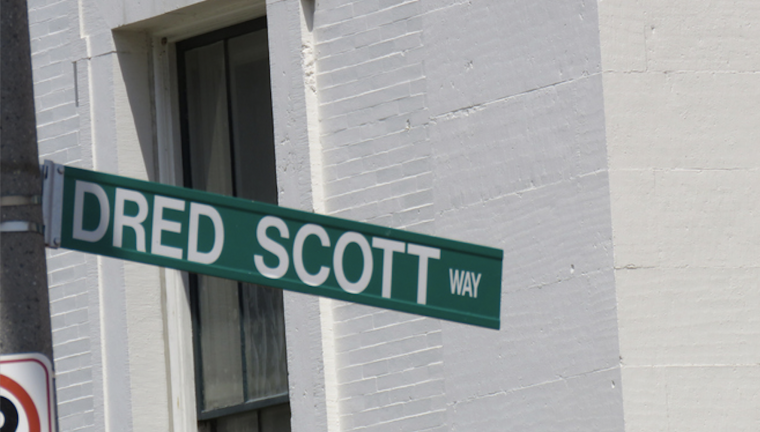
The only way slavery and genocide can exist openly in a society is with the participation of the government – and indirectly the people. In the United States, the final check on tyranny was supposed to be the judicial department, composed of courts governed by judges whose judicial power was intended to be checked by juries of citizens.
But a predictable thing occurred when the judges nixed juries (by employing procedural technicalities to get around their constitutional authority) and mixed with the rich and powerful: The judges took sides. The wrong side – the side of the rich of powerful against providing justice for the people. See e.g. Dahlia Lathwick,” Slate (September 30, 2014) reviewing the 2014 book by Constitutional Law Professor Erwin Chemerinsky, The Case Against the Supreme Court. See also Do the “Haves” Come Out Ahead Over Time? Applying Galanter’s Framework to Decisions of the U.S. Courts of Appeals, 1925-1988,” 33 Law & Soc’y Rev. 811 (1999); Galanter, Mark, “Why the ‘Haves’ Come Out Ahead: Speculations on the Limits of Legal Change” (1994).
As my two previous articles on “the evolution of debt slavery in modern times” assert, American courts have consistently used their Article III judicial power to benefit the rich and powerful at the cost of providing justice for the people. In the Dred Scott v Sanford ruling the Supreme Court concluded the entire race of black people was not entitled to seek justice in American courts because they were merely property meant to be bought and sold by wealthy white Americans.
This travesty of judicial review (criticized by President Abraham Lincoln both in the context of constitutional doctrine and with regard to the Dred Scott case specifically) spawned the great Civil War which the people had to fight to undo the injustice of the judicial branch. The war cost this nation the lives of 620,000 people simply because a calloused judicial branch turned its back on that basic truth that government’s overriding purpose is to achieve justice by protecting the inalienable rights of all people.
And unfortunately, American judges have typically had no clue about the difference between good and evil or right and wrong or justice and injustice because of their longstanding and unflinching loyalty to the rich and powerful. Regrettably … this hasn’t changed.
One of the Supreme Court’s most recent cases perpetuating modern day debt slavery is its unanimous opinion in Henson v Santander Consumer USA Inc. In that case, the Court held the Fair Debt Collection Practices Act, which was enacted by Congress to prevent “debt collectors” from using unfair and unconscionable debt collection practices against the consumers, including homeowners, does not apply to debt buyers. Translation: Debt buyers can use unfair and unconscionable practices to collect debts they have purchased for pennies on the dollar and cannot be held liable for those injuries such practices cause to the lives, liberties, property, and happiness of the people.
Santander is the modern day moral equivalent of Dred Scott in that it treats debtors as property the wealthy can abuse. Santander eschews any notions of justice or equity in order to motivate the sale of bad debt to unethical hedge funds who use every unconscionable trick in the book to attack and hurt American consumers to collect bad debt.
Congress’ goal in enacting the Fair Debt Collection Act was to prevent unscrupulous downstream debt buyers from bombarding Americans with bad-faith debt-collection practices and then the Supreme Court comes along and tells these creep companies and their soulless lawyers that they can mistreat the people in order to collect purported debts, which often are not owed. How does Santander reflect justice or even good public policy?
The obvious answer is it does not. Santander, just like the Dred Scott case, starts from the dubious proposition that: “[i]t is not the province of the court to decide upon the justice or injustice ...” and then misinterprets legislation to insure the continued redistribution of wealth to the 1 percent, which has always been its practice except for a brief period of time when FDR threatened to pack the Supreme Court in order to squelch this habit.
If it is true (and I think it is) that American courts are not about justice, then we as a people must ask whether we need (or want) Article III courts at all For as James Madison so famously wrote in Federalist Paper No. 51: “... Justice is the end of government. It is the end of civil society. It ever has been and ever will be pursued until it be obtained, or until liberty be lost in the pursuit...”
Coming in Part 2: Circumstantial evidence the Supreme Court facilitated the 2008 financial collapse by restricting trials for homeowners by changing rules of civil procedure in 2007.
Author Scott Stafne is originally from Bettendorf, Iowa. He is an attorney living and working in Seattle, Washington, advocating for and counseling clients on constitutional law, intellectual property, international commerce and more.
Full original article link, here.










